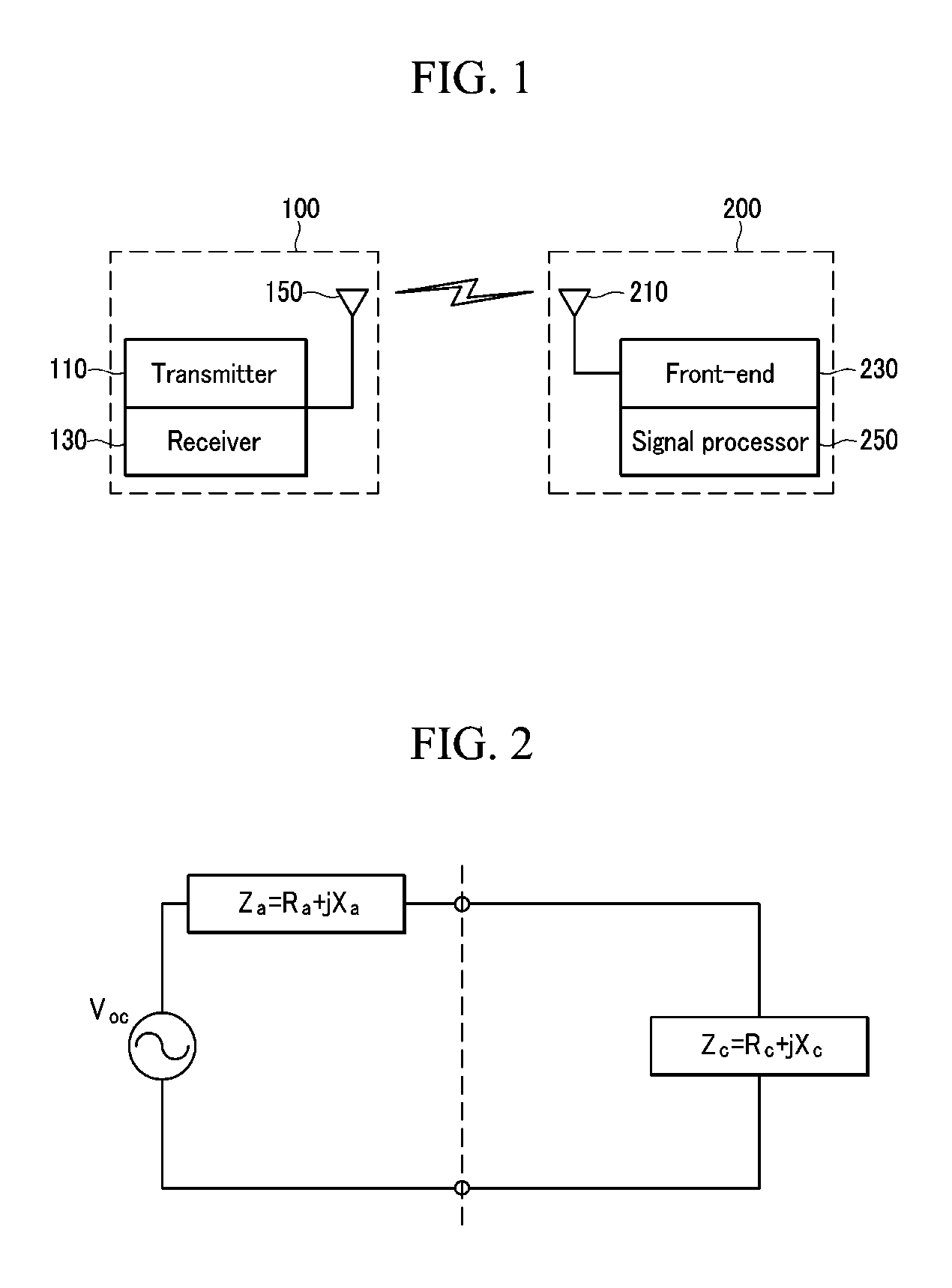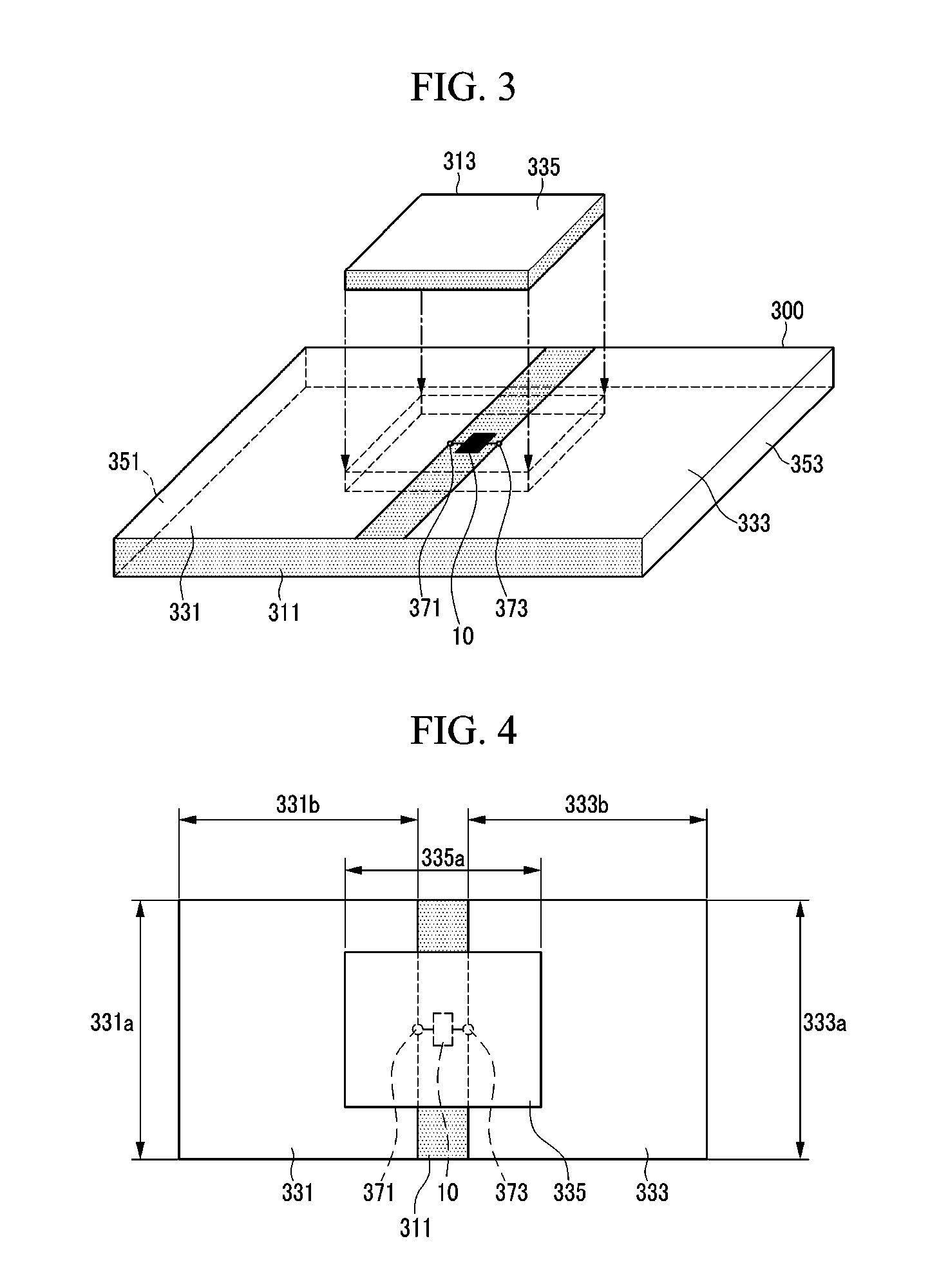Radio frequency identification tag and radio frequency identification tag antenna
a radio frequency identification and antenna technology, applied in the direction of resonant antennas, instruments, burglar alarm mechanical actuation, etc., can solve the problem of not being able to unconditionally raise the transmission power level, and achieve the effect of efficient receiving electromagnetic waves and maximizing the readable range of the rfid tag
- Summary
- Abstract
- Description
- Claims
- Application Information
AI Technical Summary
Benefits of technology
Problems solved by technology
Method used
Image
Examples
Embodiment Construction
[0033]In the following detailed description, only certain exemplary embodiments of the present invention have been shown and described, simply by way of illustration. As those skilled in the art would realize, the described embodiments may be modified in various different ways, all without departing from the spirit or scope of the present invention. Accordingly, the drawings and description are to be regarded as illustrative in nature and not restrictive. Like reference numerals designate like elements throughout the specification.
[0034]Throughout this specification and the claims which follow, unless explicitly described to the contrary, the word “comprising” and variations such as “comprises” will be understood to imply the inclusion of stated elements but not the exclusion of any other elements. Also, the terms of a unit, a device, and a module in the present specification represent a unit for processing a predetermined function or operation, which can be realized by hardware, so...
PUM
 Login to View More
Login to View More Abstract
Description
Claims
Application Information
 Login to View More
Login to View More - R&D
- Intellectual Property
- Life Sciences
- Materials
- Tech Scout
- Unparalleled Data Quality
- Higher Quality Content
- 60% Fewer Hallucinations
Browse by: Latest US Patents, China's latest patents, Technical Efficacy Thesaurus, Application Domain, Technology Topic, Popular Technical Reports.
© 2025 PatSnap. All rights reserved.Legal|Privacy policy|Modern Slavery Act Transparency Statement|Sitemap|About US| Contact US: help@patsnap.com



